Tunguska self-propelled anti-aircraft system

The 2K22 Tunguska is a Russian tracked self-propelled anti-aircraft weapon armed with a surface-to-air gun and missile system
All photos by Vadim Savitsky, Pravda.Ru
The 2K22 Tunguska is a Russian tracked self-propelled anti-aircraft weapon armed with a surface-to-air gun and missile system
All photos by Vadim Savitsky, Pravda.Ru
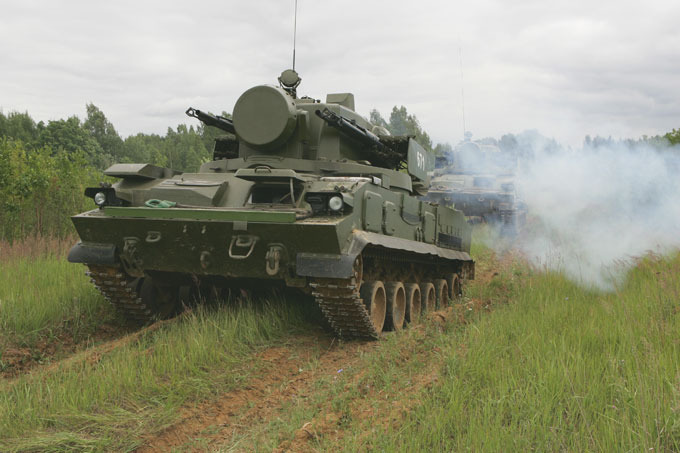
It is designed to provide day and night protection for infantry and tank regiments against low-flying aircraft, helicopters, and cruise missiles in all weather conditions. Its NATO reporting name is SA-19 "Grison".
All photos by Vadim Savitsky, Pravda.Ru
It is designed to provide day and night protection for infantry and tank regiments against low-flying aircraft, helicopters, and cruise missiles in all weather conditions. Its NATO reporting name is SA-19 "Grison".
All photos by Vadim Savitsky, Pravda.Ru

The project which was given the designation "Tunguska" was a response to the observed shortcoming of the ZSU-23-4 (short range and no early warning) and a counter to new ground attack aircraft in development such as the A-10 Thunderbolt II which was designed to be highly resistant to 23 mm cannons
All photos by Vadim Savitsky, Pravda.Ru
The project which was given the designation "Tunguska" was a response to the observed shortcoming of the ZSU-23-4 (short range and no early warning) and a counter to new ground attack aircraft in development such as the A-10 Thunderbolt II which was designed to be highly resistant to 23 mm cannons
All photos by Vadim Savitsky, Pravda.Ru

Studies were conducted and demonstrated that a 30 mm cannon would require two-to-three times fewer shells to destroy a given target than the 23 mm cannon of the ZSU-23-4, and that firing at a MiG-17 (or similarly at, in case of war, NATO's Hawker Hunter or Fiat G.91) flying at 300 m/s, with an identical mass of 30 mm projectiles would result in a kill probability of 1.5 times greater than with 23 mm projectiles
All photos by Vadim Savitsky, Pravda.Ru
Studies were conducted and demonstrated that a 30 mm cannon would require two-to-three times fewer shells to destroy a given target than the 23 mm cannon of the ZSU-23-4, and that firing at a MiG-17 (or similarly at, in case of war, NATO's Hawker Hunter or Fiat G.91) flying at 300 m/s, with an identical mass of 30 mm projectiles would result in a kill probability of 1.5 times greater than with 23 mm projectiles
All photos by Vadim Savitsky, Pravda.Ru

The initial requirements set for the system were to achieve twice the performance in terms of range, altitude and combat effectiveness than the ZSU-23-4, additionally the system should have a reaction time no greater than 10 seconds
All photos by Vadim Savitsky, Pravda.Ru
The initial requirements set for the system were to achieve twice the performance in terms of range, altitude and combat effectiveness than the ZSU-23-4, additionally the system should have a reaction time no greater than 10 seconds
All photos by Vadim Savitsky, Pravda.Ru
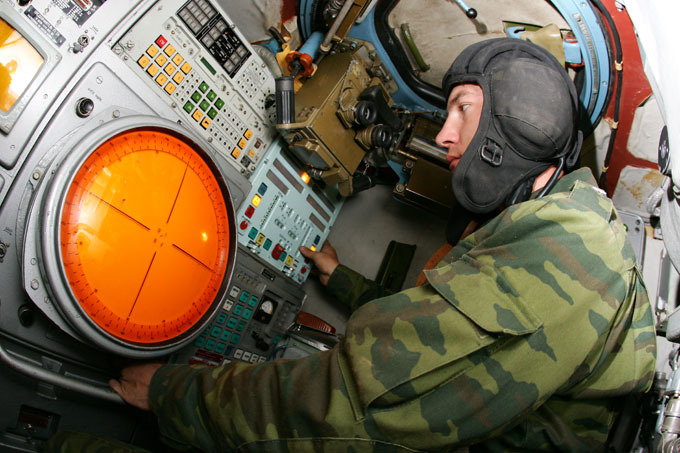
Due to the similarities in fire control of artillery and missiles it was decided that Tunguska would be a combined gun and missile system. By combining guns and missiles, the system is more effective than the ZSU-23-4, engaging targets at long-range with missiles, and shorter range targets with guns.
All photos by Vadim Savitsky, Pravda.Ru
Due to the similarities in fire control of artillery and missiles it was decided that Tunguska would be a combined gun and missile system. By combining guns and missiles, the system is more effective than the ZSU-23-4, engaging targets at long-range with missiles, and shorter range targets with guns.
All photos by Vadim Savitsky, Pravda.Ru
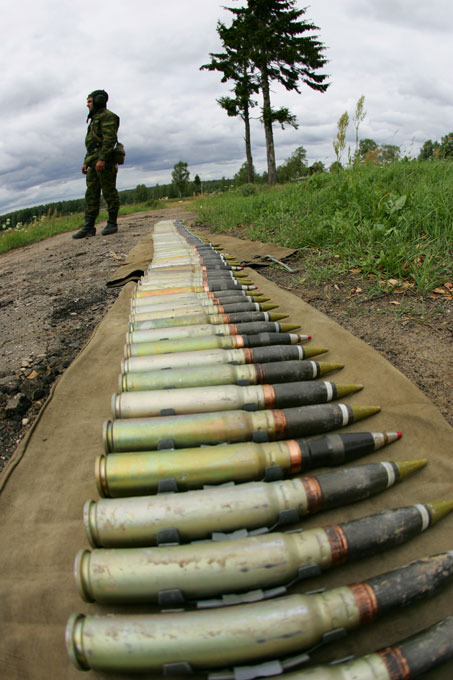
In addition to KBP as the primary contractor other members of the Soviet military industrial complex were involved in the project, the chassis were developed at the Minsk tractor factory, the radio equipment at the Ulyanovsk Mechanical Factory Ulyanovsk, guidance and navigational systems by VNII "Signal" and optics were developed by the Leningrad Optical Mechanical Association LOMO
All photos by Vadim Savitsky, Pravda.Ru
In addition to KBP as the primary contractor other members of the Soviet military industrial complex were involved in the project, the chassis were developed at the Minsk tractor factory, the radio equipment at the Ulyanovsk Mechanical Factory Ulyanovsk, guidance and navigational systems by VNII "Signal" and optics were developed by the Leningrad Optical Mechanical Association LOMO
All photos by Vadim Savitsky, Pravda.Ru
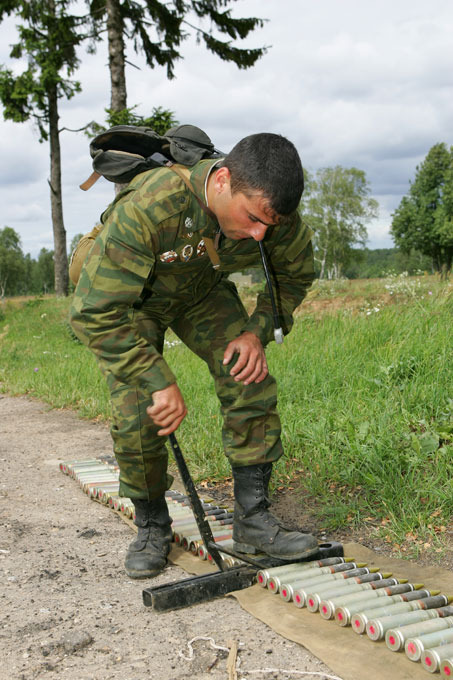
However development was slowed between 1975 and 1977 after the introduction of the 9K33 Osa missile system, which seemed to fill the same requirement but with greater missile performance. After some considerable debate it was felt that a purely missile based system would not be as effective at dealing with very low flying attack helicopters attacking at short range with no warning as had been proven so successful in the 1973 Arab-Israeli War.
All photos by Vadim Savitsky, Pravda.Ru
However development was slowed between 1975 and 1977 after the introduction of the 9K33 Osa missile system, which seemed to fill the same requirement but with greater missile performance. After some considerable debate it was felt that a purely missile based system would not be as effective at dealing with very low flying attack helicopters attacking at short range with no warning as had been proven so successful in the 1973 Arab-Israeli War.
All photos by Vadim Savitsky, Pravda.Ru
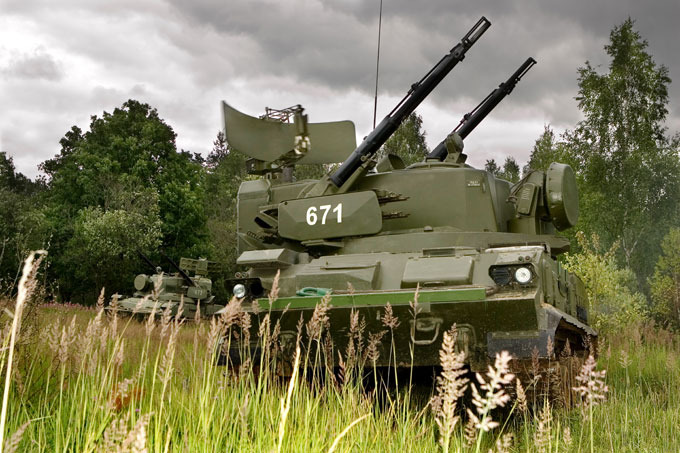
he system is referred to as 2K22 under the GRAU index, though the army designation 9K22 is a valid alternative. A complete system or battery consists of six 2S6 combat vehicles armed with the 9M311 "Treugol'nik" (triangle) surface-to-air missile and two 2A38 30 mm cannon
All photos by Vadim Savitsky, Pravda.Ru
he system is referred to as 2K22 under the GRAU index, though the army designation 9K22 is a valid alternative. A complete system or battery consists of six 2S6 combat vehicles armed with the 9M311 "Treugol'nik" (triangle) surface-to-air missile and two 2A38 30 mm cannon
All photos by Vadim Savitsky, Pravda.Ru

These are accompanied by up to three 2F77 transloader trucks. The 9K22 is also associated with a variety of support facilities including the 2F55-1, 1R10-1 and 2V110-1 repair and maintenance vehicles, the MTO-AGZ workshop and the 9V921 test vehicle. These facilities provide maintenance for the 9K22 battery in the field as well as scheduled overhauls.
All photos by Vadim Savitsky, Pravda.Ru
These are accompanied by up to three 2F77 transloader trucks. The 9K22 is also associated with a variety of support facilities including the 2F55-1, 1R10-1 and 2V110-1 repair and maintenance vehicles, the MTO-AGZ workshop and the 9V921 test vehicle. These facilities provide maintenance for the 9K22 battery in the field as well as scheduled overhauls.
All photos by Vadim Savitsky, Pravda.Ru



